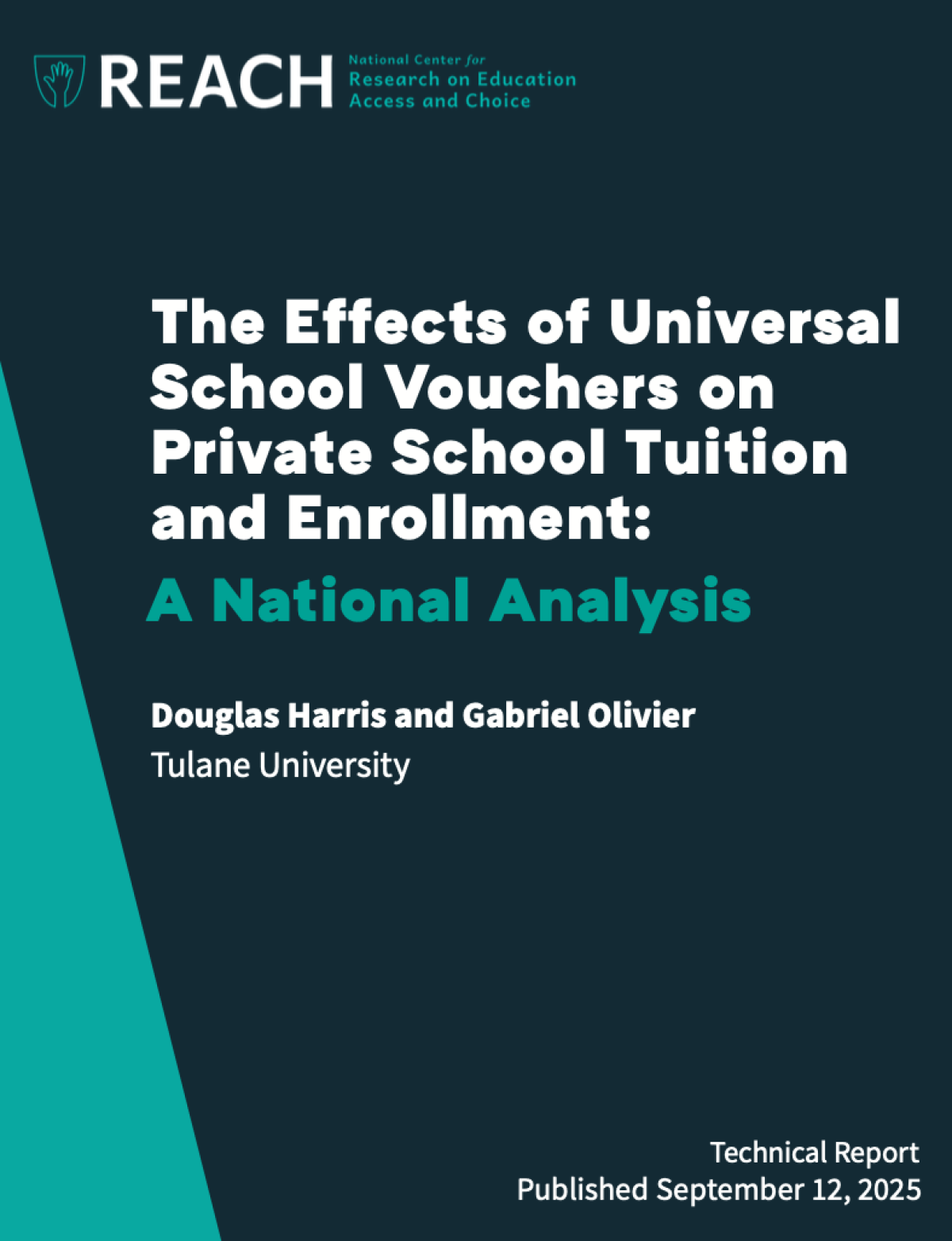This study was featured by education reporter Dana Goldstein in The New York Times. Read the article here: https://www.nytimes.com/2025/0...
President Trump’s Big Beautiful Bill put in place the nation’s first federal school voucher program, providing government funds to families to send their children to religious and other private schools, and support homeschooling. This study finds that similar programs in states across the country have so far raised private school enrollment by 3-4%, but these modest gains mask bigger shifts ahead, including rising tuition and benefits flowing mainly to higher-income families and small, religious schools.
The Effects of Universal School Vouchers on Private School Tuition and Enrollment: A National Analysis, was authored by Douglas Harris and Gabriel Olivier and released by REACH. The analysis focuses on 11 states that have adopted expansive, universal voucher programs, sometimes called Education Savings Accounts (ESAs), that provide funds to essentially all families with children, regardless of income, to attend almost any type of private school.
Because little public information is available about private schools, the research team had to undertake an ambitious, first-of-its-kind, effort to combine multiple national data sources, allowing them to study more than half of all U.S. private schools. The researchers drew three main conclusions:
Vouchers have already increased private school enrollment in participating states by 3-4%. While this might seem small, the authors identify seven reasons why the effects will likely grow substantially over time. This means that the funds are going to families who already send their children to private schools and who generally have above-average incomes.
- The enrollment increases so far are concentrated in schools with low initial enrollments and Protestant religious schools.This suggests that interest in private schools may be driven by religion rather than other factors like academics.
- Some of the voucher funds have also gone to private schools themselves. In response to the program, private schools have raised their tuition rates by 5-10%.
The rising popularity of these programs has sparked both interest and controversy, with critics focusing on the possible negative impact on public education funding and rising private school tuition costs. These results suggest some of those effects are starting to arise.
The authors also shed light on the private schooling options that vouchers are making more available to families, dispelling the myth that private schools look like traditional public schools and are expensive. The most common enrollment size is about 30 students and the most common tuition is $5,000 per year. Many of these schools are not well known and operate, for example, in church basements.
This study is the first in a series by REACH that will leverage these unusual data to explore different dimensions of vouchers and ESAs, including public school closures and effects on student achievement.
asdsdv
